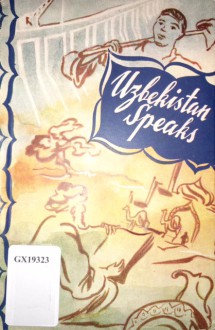
Thanks to Rosie and the whole team at Pen & Sword for providing me a hardback copy of this gorgeous book that I freely chose to review.
This is not one of the usual books I review, but over the last few years I’ve become acquainted with adult colouring books through my mother, who loves them, and when I saw this one I realised this was something a bit different from most of the colouring books I’d seen. First, this is a hardback book, and it is not about a subject like flowers, or animals, or even a film. It is a book that promises “an experience of cultural treasures to colour” from Uzbekistan, and it does deliver. The book contains photographs of places, objects, ornaments, textiles… It is divided into distinct sections:
1) Architecture: with photographs of ancient temples, palaces, and modern mosques and other buildings, with brief explanations of the history and the significance of the building, in one page, and in the opposite page, the drawing to colour (in some cases of the reconstruction of the ancient building).
2) Murals. (Here I loved the winged horses and the beautiful geometrical ceiling decorations).
3) Ganch carvings. Intricate and beautiful, this section includes several pages of designs for free colouring, without corresponding photographs. In case you are not familiar with ganch carvings (I didn’t know the name but recognised it when I saw pictures), you can find more about it here).
4) Mosaics. Here, there are some deceptively simple and some incredibly detailed (like the one featured in the cover of the book). I’m a big fan of mosaics and loved this section.
5) Glazed bowls. If you love pottery, I’m sure you’ll enjoy this one.
6) The textiles section includes some richly coloured woven carpets, amazing dresses (iroki embroidery) and gowns.
7) Paintings. These are fairly recent and incredibly beautiful as well. Although there are some fairly modern in style, others make one think of the Arabian Nights.
The quality of the print, the paper, the colours, the selection of contents, and the sheer beauty of the book is a joy. It is perhaps such a pretty object that I am not sure that many people will dare to colour it and risk ruining it, but I can see it inspiring many, and also making many people wonder about the country and its history.
If you are looking for an unusual present for somebody who loves colouring book, or simply somebody who might appreciate a beautiful book about the arts, craft, and architecture of Uzbekistan, I’d recommend it.

 Log in with Facebook
Log in with Facebook 






